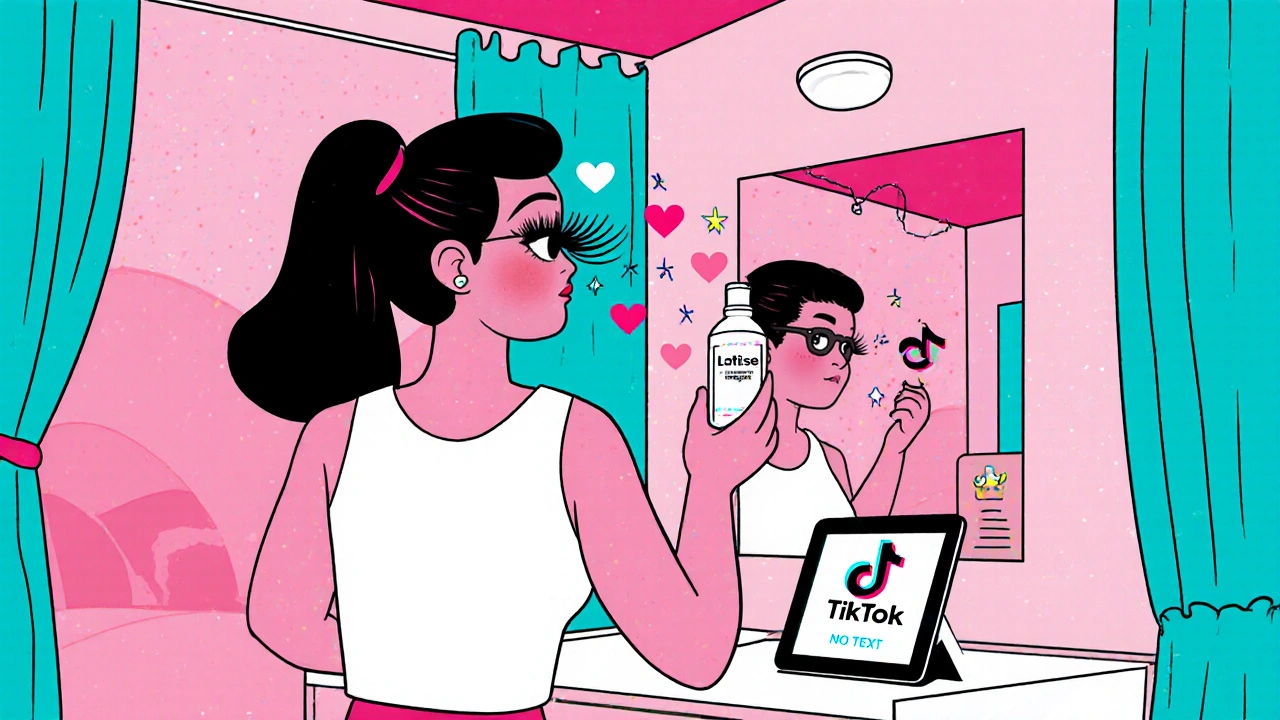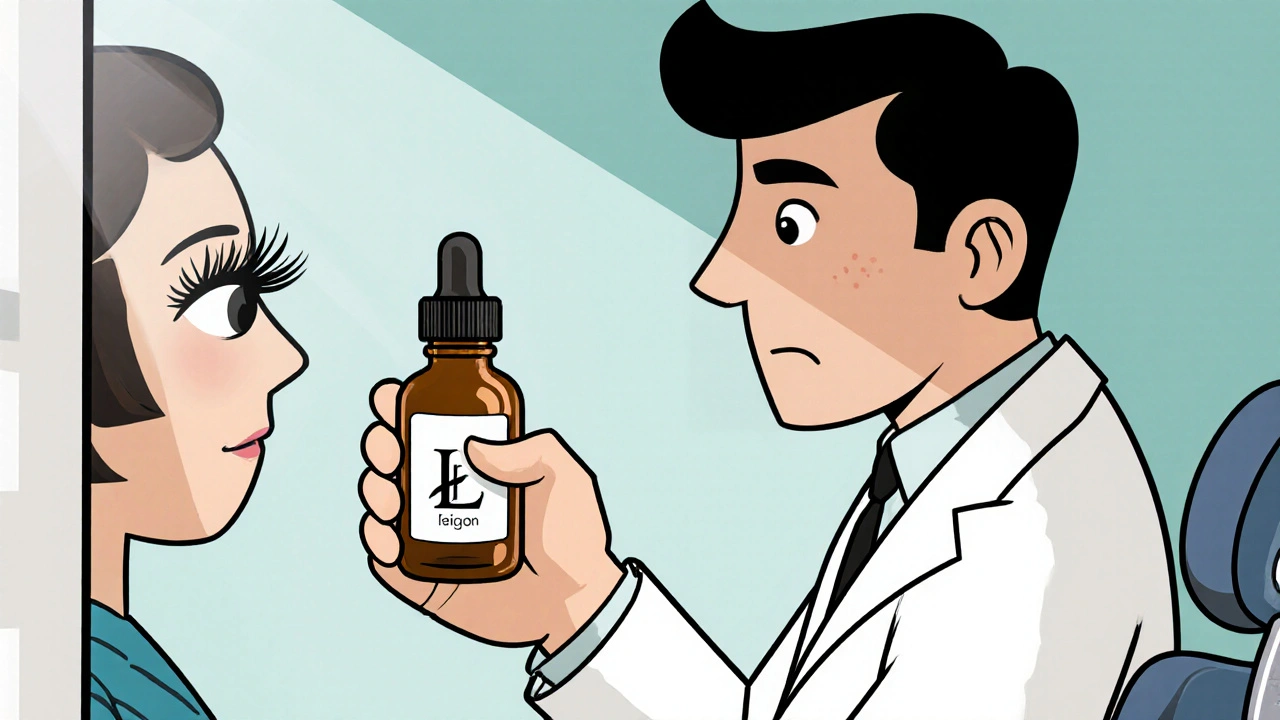Eyelash Enhancement Comparison Tool
Find Your Perfect Option
Answer a few quick questions to see which method best matches your needs.
Prescription (Latisse)
Bimatoprost 0.03%
FDA-approved for eyelash growth
Mascara
Zero ingredients
Immediate effect
Extensions
Synthetic fibers
Dramatic instant effect
Your Recommended Option
Prescription (Latisse)
This option best matches your preferences for safety, regulation, and long-term results.
When an eye‑drop for glaucoma started making headlines in beauty magazines, many wondered how a medical treatment could reshape what we consider attractive. Bimatoprost is a synthetic prostaglandin analog originally approved to lower intra‑ocular pressure in glaucoma patients. Its side‑effect - longer, fuller eyelashes - sparked a cultural ripple that still influences makeup trends, social media aesthetics, and even regulatory debates today.
From Eye Pressure to Eyelash Envy
The story begins in the 1990s when ophthalmologists began testing Bimatoprost as a once‑daily eye drop to relieve glaucoma. Clinical trials showed a consistent, unexpected lift in eyelash length, thickness, and darkness. Researchers quickly noted the cosmetic potential, and in 2008 the U.S. Food and Drug Administration (FDA) approved it under the brand name Latisse for treating hypotrichosis of the eyelashes.
Why Eyelashes Matter in Modern Beauty
Long, fluttery lashes have been a beauty marker for centuries, but the 21st‑century media explosion amplified their importance. Instagram filters, TikTok tutorials, and celebrity makeup artists all showcase dramatic eye looks as a shortcut to a polished appearance. The cultural narrative shifted: shorter lashes = unkempt, while voluminous lashes signal effortlessness and glamour.
How Bimatoprost Changed the Market
After Latisse hit shelves, the global eyelash‑enhancement market grew by an estimated 27% between 2019 and 2024, according to a Euromonitor report. The drug’s clinical credibility gave rise to a new category of "pharmaceutical cosmetics," placing it alongside traditional options like mascara, eyelash extensions, and newer topical agents such as Minoxidil (off‑label for lashes).
| Method | Active Ingredient | Typical Cost (US$) | Duration of Effect | Regulatory Status |
|---|---|---|---|---|
| Prescription Eye Drop (Latisse) | Bimatoprost 0.03% | 150‑180 per 3‑month supply | 6‑8 weeks to visible growth | FDA‑approved |
| Mascara | None (cosmetic) | 5‑10 per tube | Hours | Cosmetic |
| Eyelash Extensions | None (synthetic fibers) | 80‑120 per session | 3‑6 weeks before refills | Service‑based |
| Topical Minoxidil (off‑label) | Minoxidil 2‑5% | 30‑45 per bottle | 12‑16 weeks | Off‑label |

Social Media, Influencers, and the Bimatoprost Boom
Within a year of Latisse’s launch, beauty influencers began posting "before and after" videos showing dramatic lash growth. A single TikTok clip of a popular creator flaunting her new lashes generated over 12 million views, prompting a surge in search queries for "can you get longer lashes with prescription drops?" According to Google Trends, the term "Latisse" peaked in October 2023 with a 220% rise from the previous year.
Ethical and Health Concerns
Despite its popularity, the drug isn’t without risks. Reported side‑effects include ocular irritation, darkening of the iris, and, rarely, unwanted facial hair growth. Moreover, the off‑label use of Bimatoprost for cosmetic purposes raises questions about equitable access: a prescription may be hard to obtain in low‑income regions, potentially widening beauty‑related socioeconomic gaps.

Guidelines for Safe Use
- Consult an eye‑care professional before starting any Bimatoprost regimen.
- Apply the drop once nightly to the upper eyelid margin, avoiding the lower lid.
- Do not use contact lenses immediately after application; wait at least 15 minutes.
- Monitor for changes in eye colour or persistent irritation; discontinue use and seek medical advice if they occur.
- Store the bottle at room temperature and keep the tip clean to prevent contamination.
Looking Ahead: The Future of Pharmaceutical Beauty
As biotech firms explore new pathways for cosmetic enhancement, Bimatoprost serves as a blueprint for repurposing medical compounds. Trials are already underway to adapt other prostaglandin analogs for hair density, skin texture, and even nail strength. The cultural conversation is shifting from "quick fixes" to "science‑backed beauty," a narrative that could redefine standards once again.
Quick Checklist for First‑Time Users
- Verify the product is the FDA‑approved Latisse formulation, not a counterfeit.
- Read the patient information leaflet thoroughly.
- Set a reminder to apply the drop at the same time each night.
- Track progress with photos taken every two weeks.
- Maintain regular eye‑check appointments to assess intra‑ocular pressure.
Can Bimatoprost be used without a prescription?
In most countries, the formulation marketed as Latisse requires a doctor’s prescription. Purchasing it without a prescription risks counterfeit products and legal issues.
How long does it take to see results?
Typically, users notice longer lashes after 4‑8 weeks of nightly use, with full results emerging around 12 weeks.
Is Bimatoprost safe for people without glaucoma?
Clinical studies show the drug is generally safe for healthy eyes when used as directed, but users should still undergo a baseline eye exam.
What are the most common side effects?
Mild eye irritation, redness, and darkening of the iris are the most reported. Rarely, users develop unwanted hair growth on the cheeks or forehead.
Can men use Bimatoprost for lash enhancement?
Yes, the drug works regardless of gender, though marketing often targets women. Men should follow the same safety guidelines.







October 21, 2025 AT 17:24
Wow, who knew a glaucoma drop could end up on every beauty vlog? 🤩 Bimatoprost really flipped the script – it started as a pressure‑lowering drug, and now it’s the go‑to for longer lashes. Just a heads‑up: you still need a prescription and an eye exam before you start, because iris darkening and mild irritation can happen.